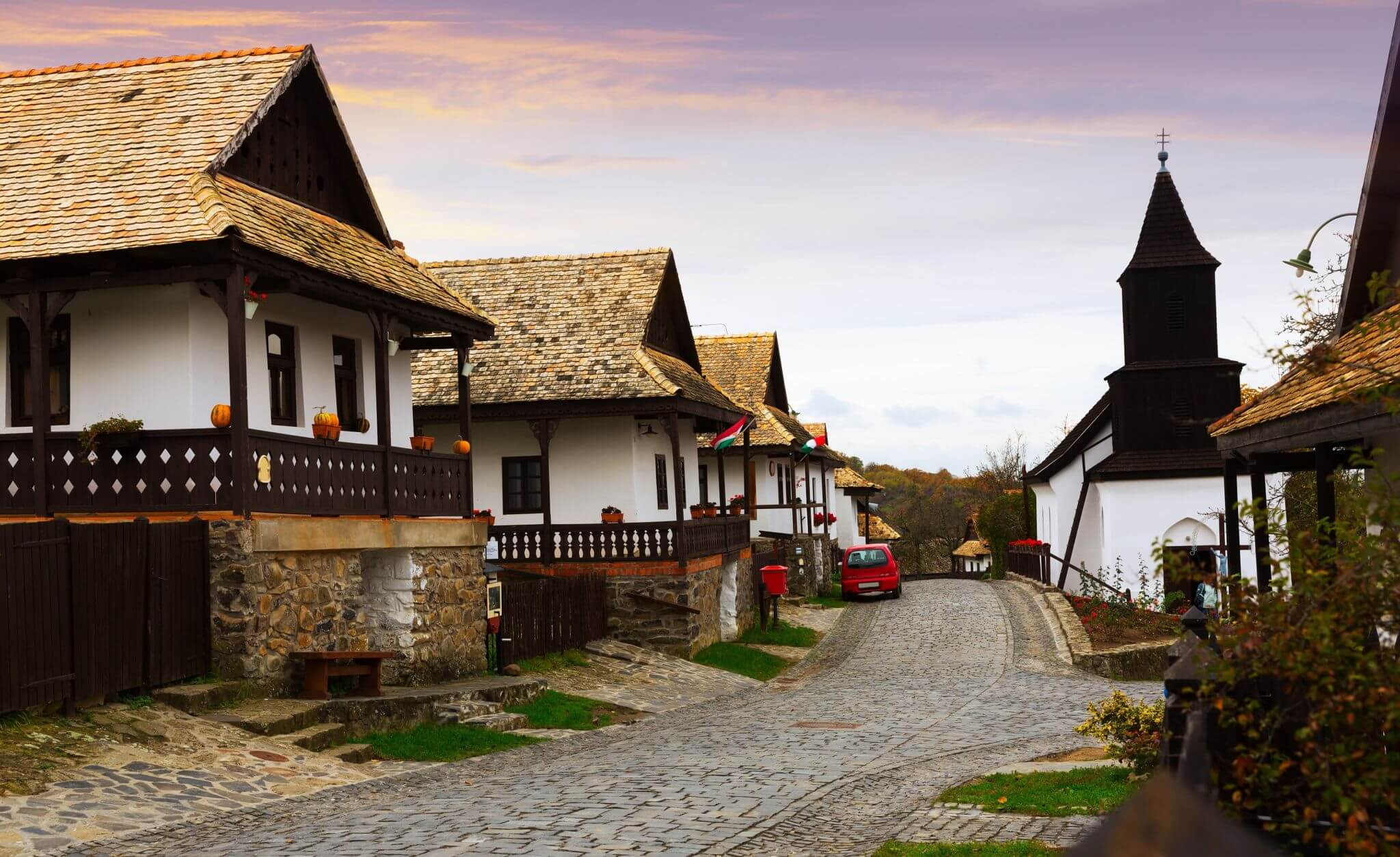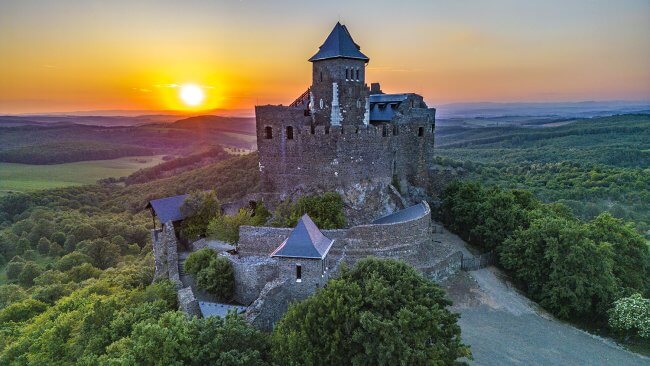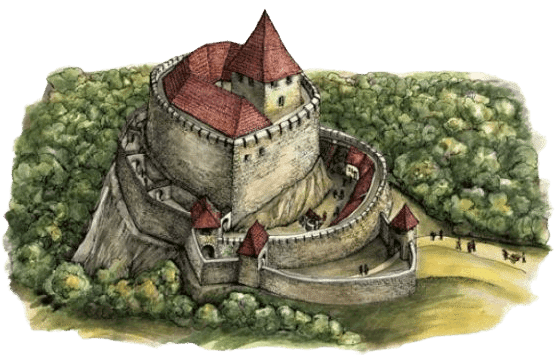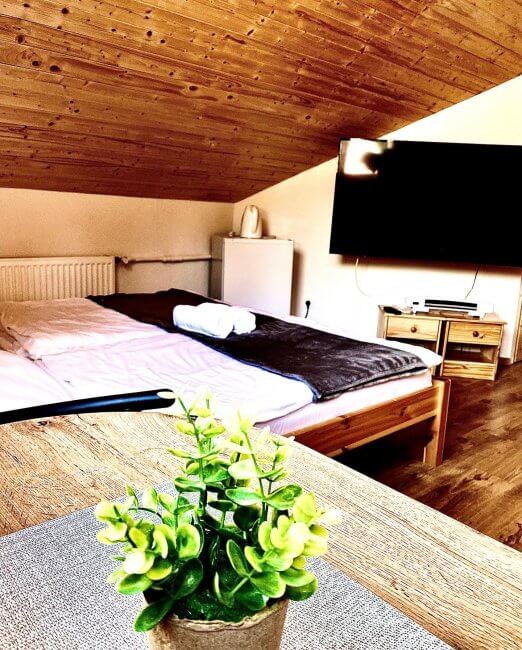LOCATION
The restored medieval castle of Hollókő is perched on the edge of a rocky cliff in the Cserhat hills, near the UNESCO World Heritage-listed Palóc settlement.
HISTORY
The castle in Hollókő was built by the Illés branch of the Kacsics tribe after the Tatar invasion on the rock near the village. The fortress was gradually extended over the centuries, adding ramparts, bastions, dwellings and cisterns to the original 13th century walls. In the anarchic internal war that broke out at the beginning of the 14th century, they were forced to surrender to the provincial lord Mateo Csák, whom they served with their weapons. In 1313 the country was captured by the army of King Charles of Anjou, who was slowly re-establishing the unity of the state, and was then given to the victorious monarch’s favourite son, Thomas of Szécsényi, also of the Kacsics. In the following centuries, his descendants owned the castle of Hollókő.At the beginning of the 15th century, the castle (together with Szécsény, Salgó and Csővár) became the property of the Hussites. János Giskra himself negotiated in the castle with the delegates of Hont and Nógrád counties. In 1455 (in the absence of male heirs) László Szécsényi pledged his property, including the castle of Hollókő, to his sons-in-law, Mihály Országh Guthi and Albert Losonczy. In the late 15th and early 16th centuries, the Losonczy and Guthi Országs had the castle significantly remodelled. The pentagonal complex of residential tower and palace was extended with the outer castle, which housed a series of stables and storehouses. After the Ottoman occupation of Buda Castle in 1541, the castles of Nógrád were increasingly threatened and the Habsburg command incorporated them into the royal system of fortifications. The garrison stationed within the walls of the castle had the task of preventing the Turkish cavalry troops on their raiding expeditions from entering the surrounding serf villages, but their small numbers made this difficult.
PARTICIPANTS
The dimensions of the castle are as follows: 68 metres north-south and 51 metres east-west. The difference in level between the entrance gate and the entrance to the tower is 27.5 metres. Entering through the medieval entrance to the castle, the entrance passage begins a narrowing, multi-branched, upward passage that leads to the square, external gate tower with drawbridge. Access to the outer courtyard was made difficult by the succession of gates and the wolf-pit between them. Access to the cisterned outer courtyard was only possible via the lowered drawbridge. In the outer courtyard there is a cistern carved into the rock, 4 metres in diameter. The legend has it that this is where Máté Csák would have hidden his treasures, and later the Turks would have gathered the gold they had stolen from the area. However, the many treasure hunters left without any results.
From the outer bailey, two masonry guards set off in the direction of the inner gate. One is located directly next to the gate leading from the ramp, while the other entrance is located at the south-east corner of the inner castle, where only one of the cairn’s cornices remains. This entrance leads into an inner passage and through this the inner courtyard can be approached. In the 16th century this entrance was no longer in use. Pedestrian traffic was diverted to the south-western outer passage below, which rose in steps. Here it ended with a triangular-shaped watchtower. The terraced outer passage, divided into several sections by four gates, provided access to the inner gate. Stepping out of the inner castle gate leads to a vestibule, from which three rooms can be approached. The door on the left opened into the cellar, the Gothic entrance on the right led to the south-western wing of the palace. The entrance hall leads to the inner courtyard via a rock-cut staircase.
The inner courtyard was narrowed in the 16th century, and the palace was raised by two more levels. The inner castle is supported in places by the two-metre wide walls of the north and west wings of the L-shaped palace. The ground floor of the tower was also approached from the narrowed inner courtyard, and from there internal stairs led to the upper floors. The tower is four storeys high and its mass, finished with a fluted parapet, stands out from the rest of the castle.
Entering from the courtyard, you pass through a room to reach the palace wing above the cellar. This was the Knights’ Hall. To the right of the courtyard is the west wing of the palace. In its corner is the cistern of the inner castle. Climbing another flight of steps from the courtyard, we come to the murder gallery. A long flight of steps leads around to the entrance door of the tower.




